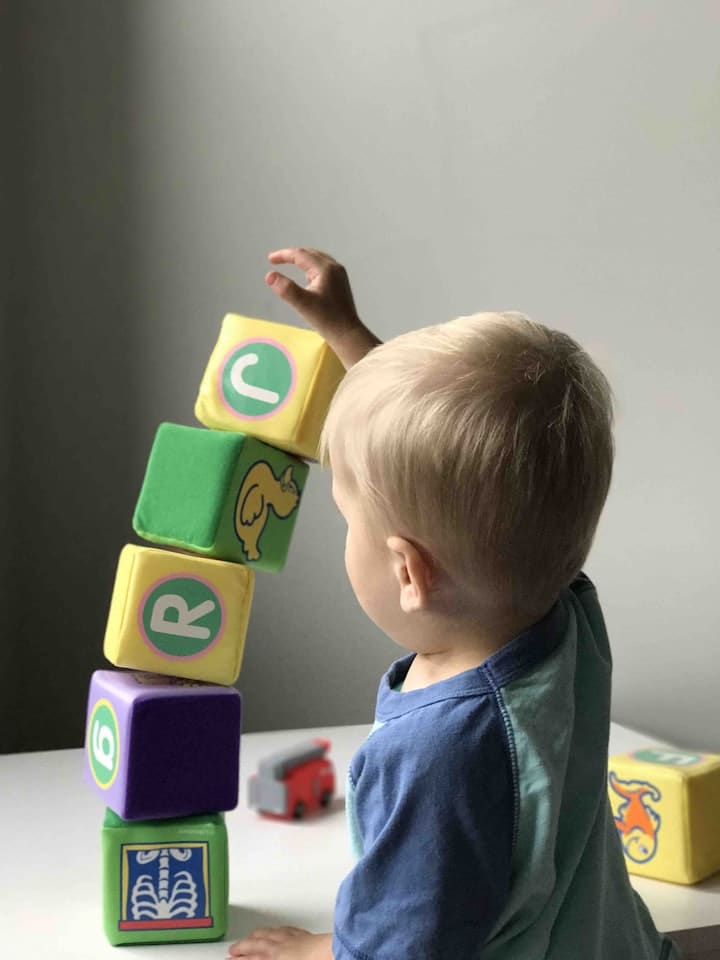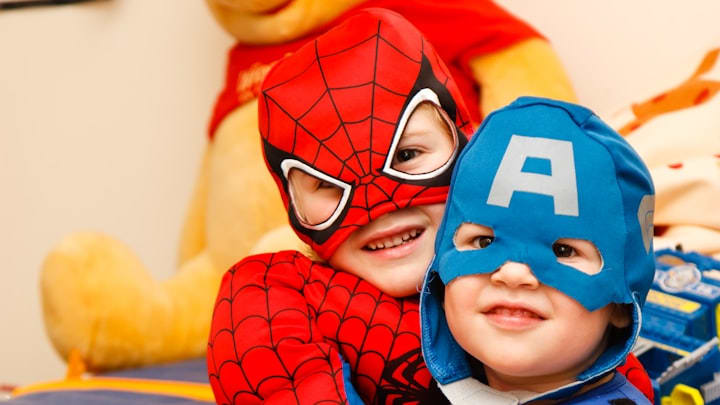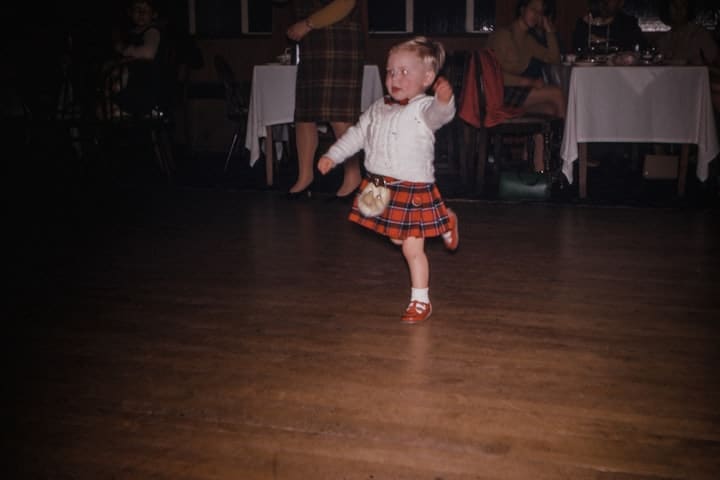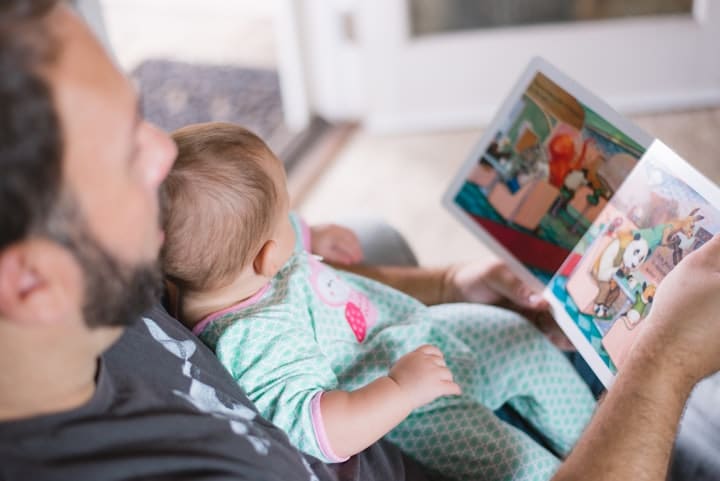Seedlings of Stillness
Everyday Habits for a Mindful Toddler

Introduction
Far from being something exclusive to grownups, or even frowned upon, mindfulness actually works wonders for children; toddlers, in particular. As for such young age, toddlers are eager little sponges who take all the information he gets around. As such, it becomes the best moment to adopt behaviors that would allow the person to stay still and be mindful. Here are some of the behaviors that parents and caregivers can develop in order to enhance their toddler’s mindfulness and pave a way towards building a healthier psychological state:
1. Being Mindful Of The Age of Toddlers
This is something that I have personally noticed, that once a person is able to grasp this, they will benefit greatly from it as it helps to develop mindfulness in a child who is capable of being trained to allow them to be fully present in a given activity or situation. Mindfulness, the practice of being present and fully engaged with whatever we're doing at the moment, can significantly impact a child's development. For toddlers, mindfulness can:
- Enhance Emotional Regulation: Toddlers become more aware of their feelings and how to handle these impulses.
- Improve Focus and Concentration: Research has also shown that young children can benefit from mindfulness by having improved attention spans.
- Reduce Anxiety and Stress: Mindfulness can be helpful in dealing with stress because it offers ways to respond to pressure situations.
- Promote Empathy and Compassion: By being mindful of their own thoughts and emotions, toddlers enhance their ability to comprehend other people’s feelings and appreciate them.
2. Creating a Mindful Environment

To emphasize, the basic roots of mindful learning starts with the environment of toddlers. If a child is given a quiet environment where there is no clutter around them, this goes a long way in helping them calm themselves and be able to concentrate better.
- Declutter and Simplify
Less clutter and disorganization is helpful due to the fact that toddlers are able to absorb information better when the setting is clean and easy to manage. Create wide spaces to play, low shelves with few toys and ensure the environment is clean and cheerful.
- Nature Elements
Bringing some parts of nature inside home can dramatically improve mindfulness. Natural light, houseplants, wooden and stony surfaces are conducive to creating a calming environment. The availability of the natural environment also provides the toddlers with a sense of calmness and stability.
- Sensory Corners
Set up a snoozy nest with soft pillows, baby blankets and small toys for baby to touch. Toddlers can benefit from sensory play as it helps them to be fully engaged in the current play time especially by touch, hearing, and sight.
3. Establishing Mindful Routines
Schedules are useful at this age as they help toddlers to predict the flow of events in their daily lives and do not cause confusion. It will also allow them to incorporate the mindfulness approaches into their day to day activities easily.

- Morning Rituals
Meditate or engage in any other form of relaxation exercise in the morning before you begin the day. In the morning, take a few minutes to stretch together, or perhaps take some deep breaths before starting your day. Focusing on something as simple as the sunlight in the morning, birds singing, or the misty morning air in the morning can help make your toddler feel like he or she is right there and at the same time be thankful.
- Meal Times
Make meal time a meaningful moment. Point out various attributes of the food, like color, form or texture, and motivate your child to pay attention to it as well. They should be trained on how best to chew and relish their food, which help make them better understand the importance of taking healthy foods.
- Bedtime Routine
A regular and quiet bedtime schedule is important for the body and mind of a toddler. Some of the bedtime routines include; taking a warm bath, massaging and reading a story to the child before sleep. You can include a brief mindfulness practice or just a basic breathing exercise to assist them in relaxing.
4. Mindful Activities for Toddlers
Playtime with children aged two and below can be enjoyable and at the same time beneficial. Below are some activities that can be implemented to help young children learn about mindfulness.

- Breathing Exercises
If possible, the parent should attempt to teach their toddler how to take deep breaths. An example is the ‘balloon breath’ whereby they imitate that they are holding a balloon between their hands and blowing air into it while breathing in, then they pretend to deflate the balloon by blowing air out while exhaling.
- Nature Walks
It is quite essential for parents to take toddlers on nature walks as this will help them appreciate nature and also engage in mindfulness. Guide them to pay attention to the sounds, views and odors in the surrounding environment. Encourage them to take a hold of of a leaf or a stone and tell the toddler about its touch and feel.
- Yoga for Toddlers
As it may seem strange, practicing yoga may be very useful for toddlers as it enhances balance, coordination, and focus. These positions like “tree”, “cat” and “downward dog” movements are easy and fun that can be adopted by young children. Make it a fun activity by incorporating animal sounds and movements.
- Art and Craft
Art is, in fact, the perfect ally to help one practice mindfulness. Simple tasks like painting, drawing or modeling clay also help toddlers learn to be creative and relish every part of it since they do not have to wait for the results. Guide them into expressing words about what they are producing together with how the materials feel like to touch.
5. Mindful Communication
The process of conscious conversation is a crucial aspect of maintaining mindfulness. It is important to be mindful of the words that are used when talking to toddlers as it can affect their level of emotional intelligence and mindfulness.

- Active Listening
Make sure to incorporate active listening into your conversation with your toddler. When they speak, listen carefully and keep an eye contact with them, and when you are responding, think twice before you speak. This practice enables them to follow instructions carefully and respect their opinions and feelings.
- Positive Reinforcement
Positive reinforcement approach should be instilled in order to promote mindful attitude. Compliment them for being attentive, considerate, or even if they are just gentle. These behaviors can be encouraged using positive words since it makes them feel valued and the individuals understood.
- Gentle Guidance
Make sure to help your toddler navigate their feelings with kindness and grace. Should they get angry, assist them in recognizing their anger and/or come up with methods to overcome it. Allowing them to learn words in order to speak what emotions they have lets them speak more consciously.
6. Mindfulness Through Play
It is important to emphasize one more fact, and that is playtime can be also useful for practicing mindful activities. Mindful play increases a toddler’s level of focus and fun when they are playing with objects.

- Building Blocks
A toddler can freely engage in building with the blocks and it is a kind of meditating. Let your toddler explore and manipulate the blocks primarily for the task of stacking them, noticing how they are different in shape or color, or how they balance. This activity can assist in developing the ability to focus, as well as improve the dexterity of the hands.
- Sensory Bins
Make large tubs or boxes of rice, beans, sand or any materials that children can easily manipulate. Make it more fun and interesting by providing small toys or objects for your toddler to ‘hunt’ down. Sensory play assists the toddler to be actively involved in his or her environment in a constructive manner.
- Imaginative Play
Let your toddler play with dolls, action figures or toy animals and engage in role-playing and imaginative games. Such kind of play is beneficial for toddlers because it lets them come up with stories and other scenarios, while staying mindful and engaged until they are done playing out their scenarios.
7. Integration of Mindfulness Into Social Interaction
It is therefore important to emphasize that social relational aspects give us everyday experiences in which we practice mindfulness, empathy and kindness.

- Sharing and Turn-Taking
Help your toddler understand the basics of sharing and sharing resources, or turning taking. These are skills that involve tolerance and ability to recognize feelings of other people making social skills practice to involve mindfulness.
- Mindful Manners
Teach children to say “please” and “thank you.” Small gestures like these go a long way and cultivate a culture of politeness.
8. Introducing Music and Movement to Increase Mindfulness
The parents and teachers should understand that it is very easy to teach focus and presence to toddlers through music and motor activities. These activities help them to use their senses and be aware of what is going on for them at the particular moment.

- Mindful Dancing
Switch on some gentle music, hold your toddler’s hand and move around with them, asking them questions about how they feel, and about the movements being made. They are able to liberate themselves yet they are fully aware of their body movements and the type of music they are dancing to.
- Singing and Rhyming
It is also possible to sing the songs, as well as recite the rhymes in a mindful way. Baby-scape with your toddler to encourage him/her to listen carefully to the words and the tunes to develop on his/her auditory and concentration skills.
- Musical Instruments
Some of the basic equipment to be used in the classroom are objects like drums, shakers or xylophones. Make your toddler interact with the sounds and the beats in such a way that, he will understand the various sounds he is producing around him.
9. Empathy Through Stories
Listen to and read tales that show and teach empathy and compassion. Explain what the characters are thinking and doing, so that your toddler learns to distinguish and be sensitive to others’ emotions. These activities may be useful for developing their imagination, concentration and, even, the feeling of empathy.

- Interactive Storytime
They should be questions about the events of the story, the characters and how the character feels including the end of the story. Encourage your toddler to describe what they see in the pictures and what they think could happen next if questioned.
- Mindful Narratives
Choose topics that align with values such as being conscious, being compassionate, and understanding. Books like "I Am Peace: At this stage, a picture book about mindfulness, including such books as “I Am Peace” written by Susan Verde or “The Calm and Cozy Book of Sleep” by Elena Nicolai, may be helpful.
- Create Your Own Stories
Help your toddler come up with their own story. You can encourage them to choose their favorite toys or simply offer specific suggestions. This activity increases their artistic ability and attentiveness while listening to the narrator.
10. Mindfulness in Everyday Moments
One of the philosophical approaches is the integration of mindfulness into the daily routine, which makes any given moment of life a mindfulness practice.

- Mindful Bath Time
Making bath time a relaxing experience that will help the child develop his/her senses is very important so for instance you can influence the child to focus on the feel of water, smell of soap or even the bubbles that are present. This practice can make bath time pleasant thus becomes a practice most enjoyable.
- Mindful Dressing
Allow your toddler to select what they want to wear and encourage them on how to dress themselves. Guide them to pay attention to the sensations of their clothes touching their skin, the colors of the garments they wear and make it a mindful practice of this everyday activity.
- Mindful Cleaning
Allow your toddler to participate in cleaning chores that you may be undertaking such as dusting or wiping the table. This may motivate them to pay more attention to the movements and feelings of the body, thus making it into a fun task.
Importance of Mindfulness for Parents and Caregivers
Basically, as a parent or caregiver, your own mindfulness practice makes a big difference when it comes to the mindfulness training of your toddler. This is the very first step where we have to exhibit mindful behavior and try to maintain the atmosphere as soothing as possible.
1. Practice Self-Care
Make sure to take care of yourself and have time for practicing mindfulness. It may be meditation, yoga, or any other time you just sit with a cup of tea, your little one will be better for it.
2. Be Present
It is important also to be completely present when interacting with your toddler. Switch off items that could divert your attention such as phone or computer and concentrate on your child. Being present in this manner also helps them learn about being mindful through your actions.
3. Patience and Compassion
Even though it is never easy to be a parent, being as patient and understanding with ourselves and the toddler as possible is helpful in becoming more conscious and supportive. As a crucial aspect of practicing mindfulness, remember to recognize and appreciate your effort in developing this habit.
Conclusion
Teaching children to become aware of their environment is always a fruitful task that guarantees the child’s success in the future. Parents and caregivers who want to develop the seeds of stillness in their young children should cultivate a mindful culture, practice mindful processes, focus on mindful tasks, and embody mindfulness.
Such practices not only encourage people to become more mindful of their actions or the surroundings but can also strengthen the bond between you and the toddler, benefiting both of your lives in ways than one. Approach this task with a welcoming attitude and learn how to make your toddler enjoy the current age.
About the Creator
Enjoyed the story? Support the Creator.
Subscribe for free to receive all their stories in your feed. You could also pledge your support or give them a one-off tip, letting them know you appreciate their work.





Comments
There are no comments for this story
Be the first to respond and start the conversation.